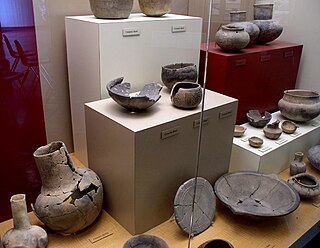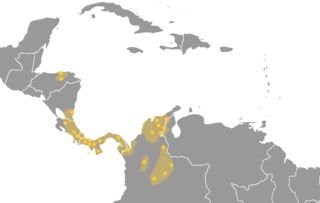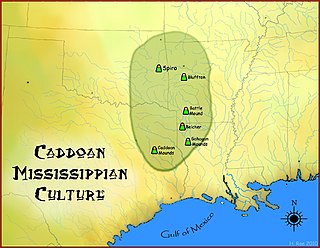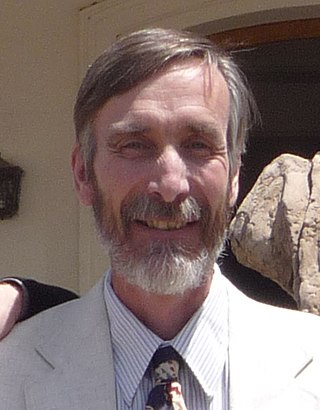
Processual archaeology is a form of archaeological theory. It had its beginnings in 1958 with the work of Gordon Willey and Philip Phillips, Method and Theory in American Archaeology, in which the pair stated that "American archaeology is anthropology, or it is nothing", a rephrasing of Frederic William Maitland's comment: "My own belief is that by and by, anthropology will have the choice between being history, and being nothing." The idea implied that the goals of archaeology were the goals of anthropology, which were to answer questions about humans and human culture. This was meant to be a critique of the former period in archaeology, the cultural-history phase in which archaeologists thought that information artifacts contained about past culture would be lost once the items became included in the archaeological record. Willey and Phillips believed all that could be done was to catalogue, describe, and create timelines based on the artifacts.
Post-processual archaeology, which is sometimes alternatively referred to as the interpretative archaeologies by its adherents, is a movement in archaeological theory that emphasizes the subjectivity of archaeological interpretations. Despite having a vague series of similarities, post-processualism consists of "very diverse strands of thought coalesced into a loose cluster of traditions". Within the post-processualist movement, a wide variety of theoretical viewpoints have been embraced, including structuralism and Neo-Marxism, as have a variety of different archaeological techniques, such as phenomenology.
Lewis Roberts Binford was an American archaeologist known for his influential work in archaeological theory, ethnoarchaeology and the Paleolithic period. He is widely considered among the most influential archaeologists of the later 20th century, and is credited with fundamentally changing the field with the introduction of processual archaeology in the 1960s. Binford's influence was controversial, however, and most theoretical work in archaeology in the late 1980s and 1990s was explicitly construed as either a reaction to or in support of the processual paradigm. Recent appraisals have judged that his approach owed more to prior work in the 1940s and 50s than suggested by Binford's strong criticism of his predecessors.
In social anthropology, matrilocal residence or matrilocality is the societal system in which a married couple resides with or near the wife's parents.
Cross-cultural studies, sometimes called holocultural studies or comparative studies, is a specialization in anthropology and sister sciences such as sociology, psychology, economics, political science that uses field data from many societies through comparative research to examine the scope of human behavior and test hypotheses about human behavior and culture.
A chiefdom is a political organization of people represented or governed by a chief. Chiefdoms have been discussed, depending on their scope, as a stateless, state analogue or early state system or institution.

The Mississippian culture was a Native American civilization that flourished in what is now the Midwestern, Eastern, and Southeastern United States from approximately 800 to 1600, varying regionally. It was known for building large, earthen platform mounds, and often other shaped mounds as well. It was composed of a series of urban settlements and satellite villages linked together by loose trading networks. The largest city was Cahokia, believed to be a major religious center located in what is present-day southern Illinois.

The Intermediate Area is an archaeological geographical area of the Americas that was defined in its clearest form by Gordon R. Willey in his 1971 book An Introduction to American Archaeology, Vol. 2: South America. It comprises the geographical region between Mesoamerica to the north and the Central Andes to the south, including portions of Honduras and Nicaragua and most of the territory of the republics of Costa Rica, Panama and Colombia. As an archaeological concept, the Intermediate Area has always been somewhat poorly defined.
Timothy R. Pauketat is an American archaeologist, director of the Illinois State Archaeological Survey, the Illinois State Archaeologist, and professor of anthropology and medieval studies at the University of Illinois Urbana-Champaign. He is known for his historical theories and his investigations at Cahokia, the major center of precolonial Mississippian culture in the American Bottom region of Illinois near St. Louis, Missouri.
Hallur is an archaeological site located in the Haveri district, in the Indian state of Karnataka. Hallur, South India's earliest Iron Age site, lies in a semi-arid region with scrub vegetation, located on the banks of the river Tungabhadra. The site is a small mound about 6.4 m high. The site was first discovered by Nagaraja Rao in 1962, and excavated in 1965. Further sampling was carried out in the late 1990s for the recovery of archaeobotanical evidence and new high precision radiocarbon dates

Richard E. Blanton is an American anthropologist, archaeologist, and academic. He is most renowned for his archaeological field and theoretical research into the development of civilizations in pre-Columbian Mesoamerica, particularly those from the central Mexican plateau and Valley of Oaxaca regions. Blanton taught at Rice University and Hunter College of the City University of New York before joining the faculty at Purdue University in 1976. He is currently Professor Emeritus of Anthropology at Purdue's College of Liberal Arts.

The Caddoan Mississippian culture was a prehistoric Native American culture considered by archaeologists as a variant of the Mississippian culture. The Caddoan Mississippians covered a large territory, including what is now Eastern Oklahoma, Western Arkansas, Northeast Texas, Southwest Missouri and Northwest Louisiana of the United States.
Lynne Sullivan is an American archaeologist and former Curator of Archaeology for the Frank H. McClung Museum located on the University of Tennessee campus in Knoxville, Tennessee. A graduate of the University of Tennessee (undergraduate) and the University of Wisconsin–Milwaukee, Sullivan is renowned for her research and publications on subjects such as Southeastern United States prehistory, Mississippian chiefdoms, mortuary analysis, and archaeological curation. She has been a major contributor to the feminist/gender archaeology movement through her studies in social inequality, gender roles, and the historic significance of women in the development of modern archaeology.

Robert Laurens Kelly is an American anthropologist who is a professor at the University of Wyoming. As a professor, he has taught introductory Archaeology as well as upper-level courses focused in Hunter-Gathers, North American Archaeology, Lithic Analysis, and Human Behavioral Ecology. Kelly's interest in archaeology began when he was a sophomore in high school in 1973. His first experience in fieldwork was an excavation of Gatecliff Rockshelter, a prehistoric site in central Nevada. Since then, Kelly has been involved with archaeology and has dedicated the majority of his work to the ethnology, ethnography, and archaeology of foraging peoples, which include research on lithic technology, initial colonization of the New World, evolutionary ecology of hunter-gatherers, and archaeological method and theory. He has been involved in research projects throughout the United States and in Chile, where he studied the remains of the Inca as well as coastal shell middens, and Madagascar, where in order to learn about farmer-forager society, Kelly has participated in ethnoarchaeological research. A majority of his work has been carried out in the Great Basin, but after moving to Wyoming in 1997 he has shifted his research to the rockshelters in the southwest Wyoming and the Bighorn Mountains.

Melvin Lawrence Ember was an American cultural anthropologist and cross-cultural researcher with wide-ranging interests who combined an active research career with writing for nonprofessionals.
Gary M. Feinman is an American archaeologist, and the MacArthur Curator of Mesoamerican, Central American, and East Asian Anthropology at the Field Museum of Natural History in Chicago. He was a part of the Valley of Oaxaca Settlement Pattern Project which focused on the evolution of the Monte Albán state and shifts in settlement in the region over three millennia. The members of the Valley of Oaxaca Settlement Pattern Project and their colleagues have now walked over the largest contiguous archaeological survey region in the world, more than 8000 sq km.
The Chaco Meridian is a north-south axis on which lie the Ancestral Puebloan sites, Aztec Ruins and Chaco Canyon, as well as Paquime at Casas Grandes in northern Mexico. Archeologist Stephen H. Lekson developed the theorizes that the location of these sites approximately on the same line of longitude (107°57'25") was intentional, and represents a ceremonial and political connection between the sites and is due to migration of the rulers of the Ancestral Puebloan moving their capital city.
Carol R. Ember is an American cultural anthropologist, cross-cultural researcher and a writer of books on anthropology. She is now the President of the Human Relations Area Files at Yale University.







